
32 roster issues to monitor after the 2020 NFL Draft
The 85th NFL Draft is in the books, and teams will pin their hopes on a new set of rookies. Franchises reveal plenty about their view of not only rookies but their returning players during drafts. Coming out of this draft, numerous storylines will surface for every team. Here is one to monitor for each of the NFL’s 32 franchises.
Arizona Cardinals
De’Vondre Campbell, not $14.25 million-per-year linebacker Deion Jones, led the Falcons in tackles last season. A four-year Falcons starter, Campbell signed with the Cardinals and was in position to be a three-down ‘backer. But Arizona has gone from needing substantial help here to suddenly sporting a loaded group, drafting do-it-all defender Isaiah Simmons at No. 8 overall. While defensive coordinator Vance Joseph could use Simmons at safety, the Clemson product figures to see plenty of time at linebacker. Campbell may have inadvertently signed a one-year, $6 million Cards deal to see his snaps cut.
Atlanta Falcons
The Falcons released No. 1 cornerback Desmond Trufant and did not address the position in free agency. GM Thomas Dimitroff said corner was the priority, which adds up after no Falcon corner graded in Pro Football Focus’ top 50 at the position last season. But Atlanta chose Clemson’s A.J. Terrell – Scouts Inc.’s No. 50 prospect and a player ESPN’s Mel Kiper Jr. did not grade as a first-round talent – 16th overall. The Falcons bypassed several consensus superior prospects because of this dire need and, with 2018 second-rounder Isaiah Oliver struggling, may require post-draft free agency assistance to fortify this area.
Baltimore Ravens
The 2019 Ravens set the NFL season rushing record, and Gus Edwards operated as a key member of the supporting cast. The former undrafted free agent surpassed 700 rushing yards for the second straight season and again topped 5.0 yards per carry. With second-round pick J.K. Dobbins arriving after a 2,000-yard season at Ohio State, Edwards is facing a reduced role. Dobbins’ arrival also could signal Mark Ingram’s three-year contract will be a two-year deal; the Ravens can create $5 million in cap space by cutting the veteran in 2021. But in 2020, Ingram and Dobbins may relegate Edwards to a seldom-used back.
Buffalo Bills
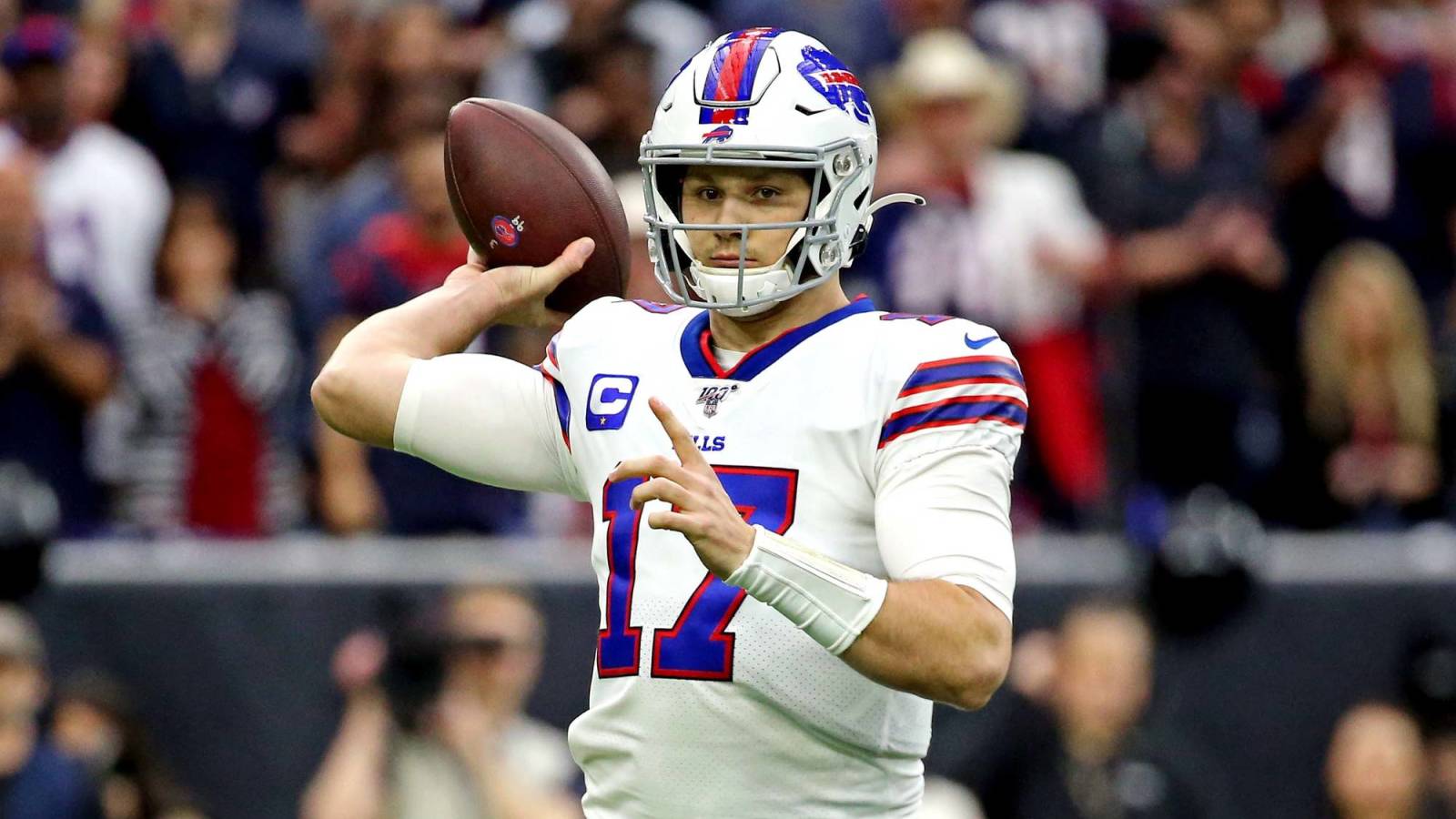
Fifth-round pick Jake Fromm forced two blue-chip quarterbacks – fourth-round pick Jacob Eason and projected 2021 first-rounder Justin Fields – to transfer from Georgia by keeping its QB1 job for three seasons. Fromm is not in Josh Allen’s league, arm strength-wise, but Allen has yet to complete 59% of his passes as a pro and did not exceed 57% at Wyoming. Fromm completed 67% of his throws in 2018 and finished his Georgia career with a 78-18 TD-INT ratio against much tougher competition than Allen faced in college. In Fromm, the Bills added both insurance and a potential down-the-line Allen threat.
Carolina Panthers
By selecting seven defensive players, the Panthers match the common-draft record held by the 1985 Browns for most defenders chosen. And the Browns did this in a 12-round draft. Carolina interestingly did not select a linebacker and waited until Round 4 to draft a cornerback. The Panthers lost four-year No. 1 corner James Bradberry in free agency and saw none of their corners rate in PFF’s top 85 at the position last season. Although Carolina chose two corners, each coming on Day 3 points to the Panthers needing more help to bolster this spot in free agency.
Chicago Bears
Football Outsiders’ top run-blocking metric – adjusted line yards – rated last season’s Bears offensive line 29th. Much of that group will return; Chicago did not pick any offensive linemen until Round 7 in this draft. While the Bears signed Germain Ifedi and plan to try him at guard, the former Seahawks right tackle struggled for much of his time in Seattle – hence his one-year, $1 million contract. The Bears had other priorities coming into this draft, but it was surprising to see them wait so long to select an O-lineman.
Cincinnati Bengals
Friday’s No. 33 overall choice of Tee Higgins clouds Cincinnati's wide receiver picture. The Bengals have longtime No. 1 wideout A.J. Green on the franchise tag, WR2 Tyler Boyd signed to a $10.75 million-per-year contract and UDFA success story Auden Tate (575 yards in just 12 games last year) returning. Higgins’ arrival could spell trouble for John Ross, the NFL Scouting Combine’s 40-yard dash kingpin. Ross has battled injuries throughout his career. Former top-10 picks generally do not become No. 5 wideouts on their own team; the Bengals may be admitting a major whiff by drafting Higgins.
Cleveland Browns
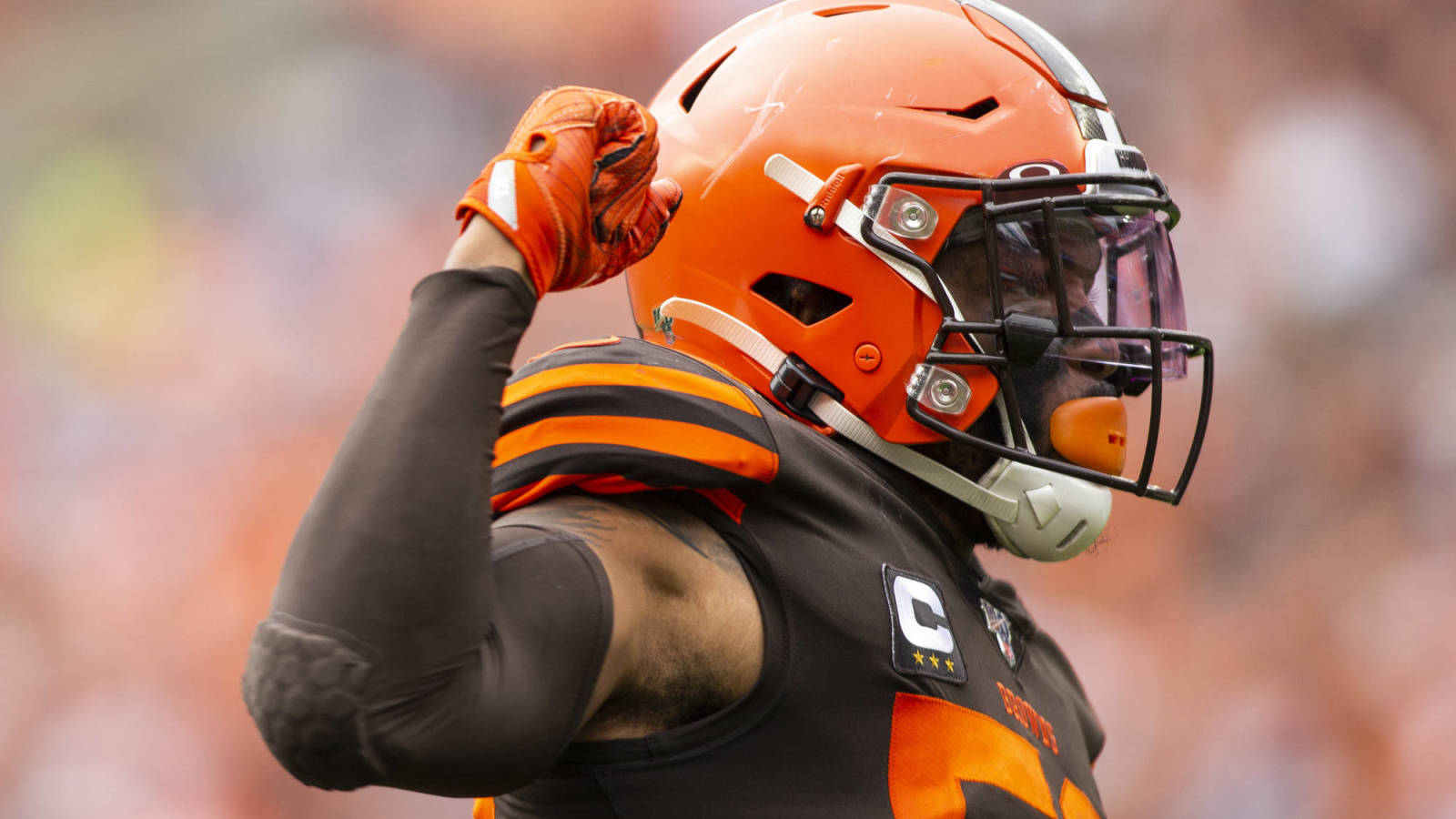
After authorizing eight-figure-per-year contracts to Christian Kirksey and Jamie Collins, the Browns are now turning their linebacking corps over to youngsters. Cleveland cut Collins last year and Kirksey in March, while letting 2019 tackle leader Joe Schobert walk in free agency. The Browns drafted LSU’s Jacob Phillips in Round 3 and do not have much competition standing in the way of him starting this season. Cleveland employs no first- or second-round picks at linebacker, marking a major transformation in resources allocated to this position.
Dallas Cowboys
Travis Frederick’s retirement stripped the Cowboys of one of this century’s premier centers, but Dallas exits the draft with a surprising number of options to replace him. The Cowboys used a 2019 third-round pick on guard/center Connor McGovern, re-signed 2018 center starter Joe Looney and selected Wisconsin’s Tyler Biadasz in Round 4 on Saturday. A 2019 first-team All-American and the Rimington Award winner – given to Division I-FBS’ best center – Biadasz gives the Cowboys immense depth and profiles as at worst a live underdog to be Frederick’s true successor.
Denver Broncos
Denver did draft Iowa corner Michael Ojemudia in Round 3, but its early receiver binge leaves a void defensively. Considering the Broncos saw perhaps the second-best corner in team history – Chris Harris – defect in free agency and have gotten little from third-round corners Brendan Langley and Isaac Yiadom, they may need to go shopping. Penciled in as Denver’s No. 2 corner, Bryce Callahan has not played since Dec. 9, 2018. Fellow ex-Bear Prince Amukamara remains in free agency and could serve as a stopgap solution for former Chicago defensive coordinator Vic Fangio in Denver.
Detroit Lions
The Lions might be admitting defeat – or at least partial defeat – on another running back. Using a Round 2 pick on D’Andre Swift signals dissatisfaction with 2018 second-rounder Kerryon Johnson. The latter has missed 14 games due to injury and saw his yards per carry dip from 5.4 as a rookie to 3.6 last season. The Lions have not ranked in the top half of the league in rushing since Barry Sanders’ 1999 retirement and have now drafted four second-round backs since 2011 – Swift, Johnson, Ameer Abdullah (2015) and Mikel Leshoure (2011).
Green Bay Packers
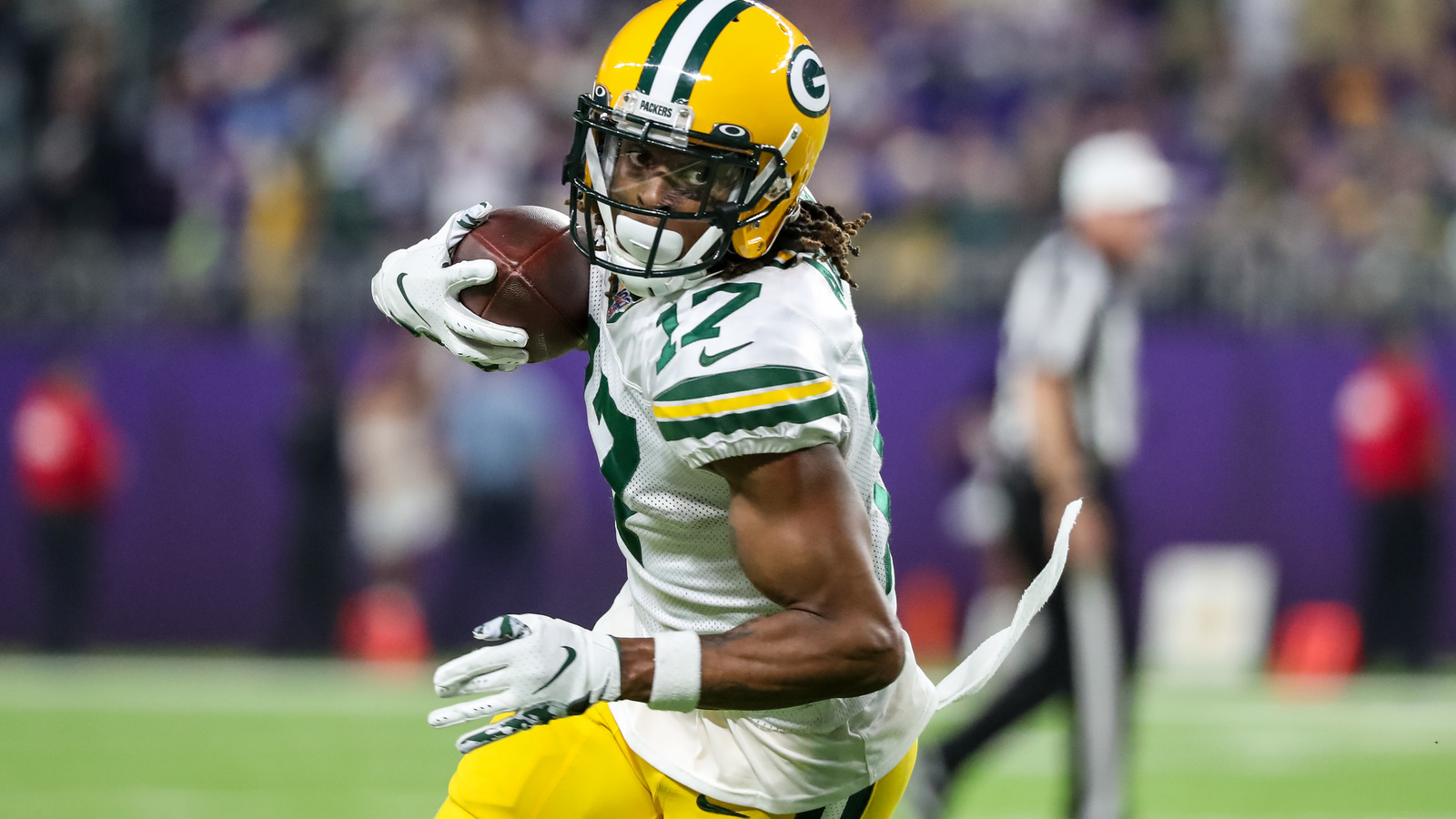
As the Chiefs, Saints and Buccaneers devote significant resources to equipping their star quarterbacks with high-end receiving cadres, the Packers will test Aaron Rodgers’ patience. Not only did Green Bay draft potential Rodgers successor Jordan Love in Round 1, the Packers did not fill their glaring receiver need. Expected to consider a wideout with their first-round pick, the Packers made nine draft picks without taking one. The Packers, who had zero 1,000-yard receivers and one 500-yard pass-catcher (Davante Adams) last season, lack a reliable No. 2 wideout and a proven tight end exiting the draft.
Houston Texans
Like a few teams exiting the draft, the Texans feature an uncertain cornerback contingent. Lacking a first-round pick because of the Laremy Tunsil trade, the Texans waited until the fourth round to address the position. While this makes sense considering the Texans used a 2019 second-round pick on Lonnie Johnson and signed Bradley Roby to a $10.5M-per-year deal, Johnson was one of the league’s worst defenders last season, and Roby is closer to a low-level No. 2 corner. Houston ranked 26th in DVOA pass defense last season and does not look especially well-equipped at its top coverage spots.
Indianapolis Colts
Jonathan Taylor was about as productive as a running back can be during three years at Wisconsin, rushing for 6,174 yards and 55 touchdowns for the run-based program. He is the kind of back who makes sense on a Colts team built around a top-tier offensive line. Indianapolis using a second-round pick on Taylor points to two-year starter Marlon Mack having to seek his payday elsewhere. Mack is entering a contract year and might spend 2020 auditioning for other teams for a March 2021 contract.
Jacksonville Jaguars
After trading All-Pro Jalen Ramsey and Pro Bowler A.J. Bouye in the past eight months, the Jaguars choosing a cornerback at No. 9 overall (Florida’s C.J. Henderson) is logical. But using a top-10 pick to replace a former top-10 pick who became one of the NFL’s premier players represents a somewhat sobering exercise. Considering the Jags employ the same GM who drafted Ramsey four years ago – Dave Caldwell – this is one of the stranger rebuilds in recent league history.
Kansas City Chiefs
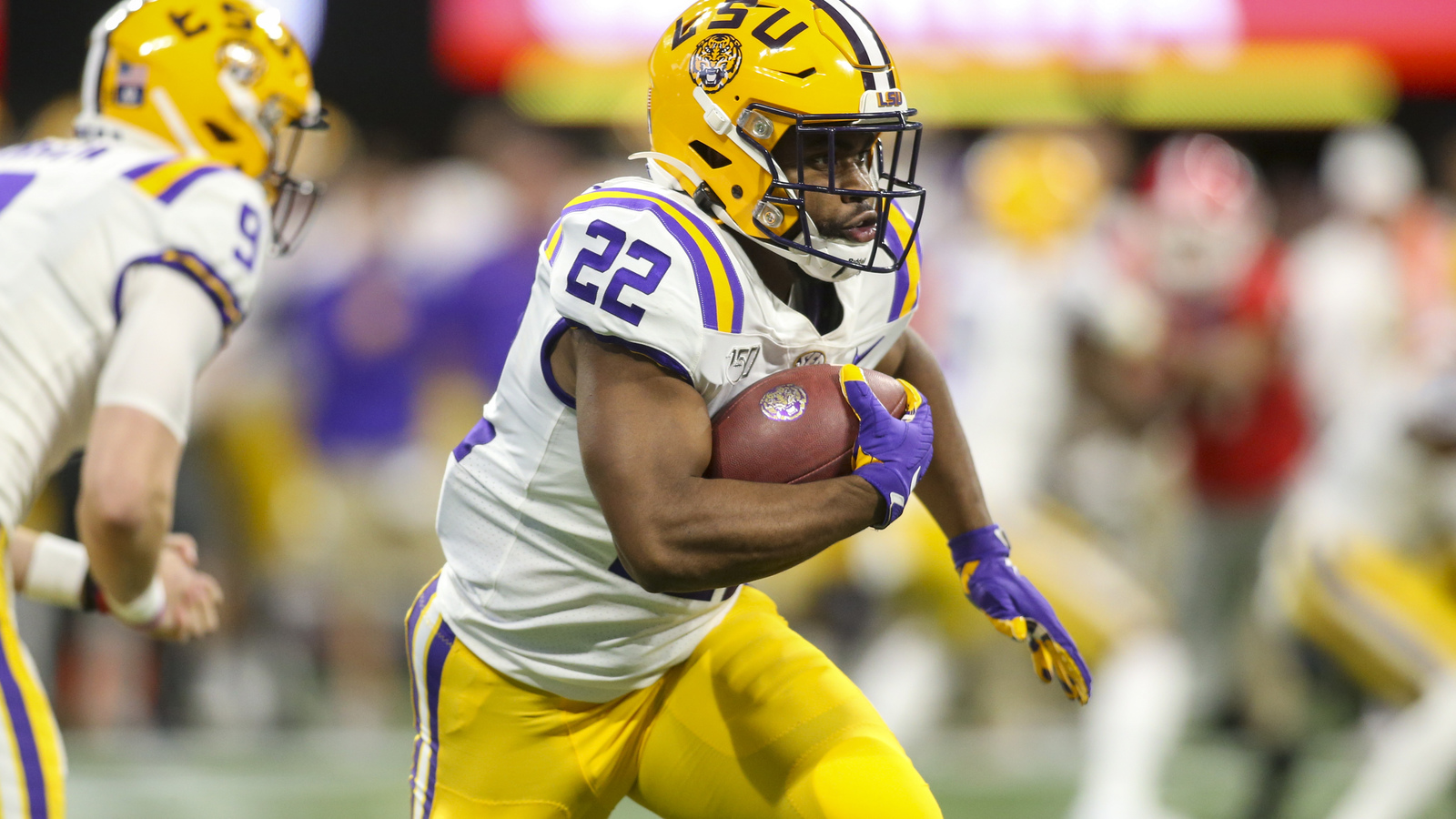
With Patrick Mahomes providing an almost unparalleled advantage, the Chiefs going defense in Round 1 would have been sensible. But Kansas City instead tabbing tackle-breaking LSU running back Clyde Edwards-Helaire, who also profiles as a promising receiving back (55 catches last season), could form one of the great skill-position groups in a long time. The Chiefs managed to persuade Sammy Watkins to take a pay cut and re-sign No. 4 wideout Demarcus Robinson. With Edwards-Helaire joining Damien Williams, K.C. has somehow improved a skill group that already included two All-Pros (Travis Kelce, Tyreek Hill).
Las Vegas Raiders
Signed to be the Oakland Raiders’ No. 2 wide receiver (to Antonio Brown’s No. 1), Tyrell Williams might get just one season in Las Vegas. The Raiders devoting a first- and two third-round picks to this position points to the veteran being a two-and-done with the franchise. Las Vegas already guaranteed Williams’ $11 million 2020 salary, but the additions of Henry Ruggs (Alabama), Lynn Bowden Jr. (Kentucky) and Bryan Edwards (South Carolina) leave little room for the 28-year-old Williams as a long-term cog. With no guaranteed money beyond 2020, Williams could become a trade chip at the deadline – if the Raiders become sellers again.
Los Angeles Chargers
A busy Bolts offseason has Los Angeles looking much more talented than it did a year ago, but one obvious deficiency remains. The Chargers left the draft without taking an offensive lineman, and although they acquired guard Trai Turner and right tackle Bryan Bulaga, they lack a left tackle. With Justin Herbert well off the pace of this year’s top quarterback prospects when facing pressure in 2019, the Chargers might have an issue that undercuts their strong offseason work. They likely need to kick the tires on free agent Jason Peters. Longtime starter Kelvin Beachum is also available.
Los Angeles Rams
The Rams broke up their Super Bowl LIII inside linebacker duo, cutting Mark Barron in 2019 and letting standout coverage ‘backer Cory Littleton defect to the Raiders in March. They did not draft a linebacker until the seventh round this weekend, which will leave a host of unproven players vying for the Rams' two starting jobs. This will be a lightly staffed group, with 2018 fifth-rounder Micah Kiser (zero career starts) and 2019 trade acquisition Kenny Young (six – all with Baltimore) leading a group that does not have a single player drafted in the first three rounds.
Miami Dolphins
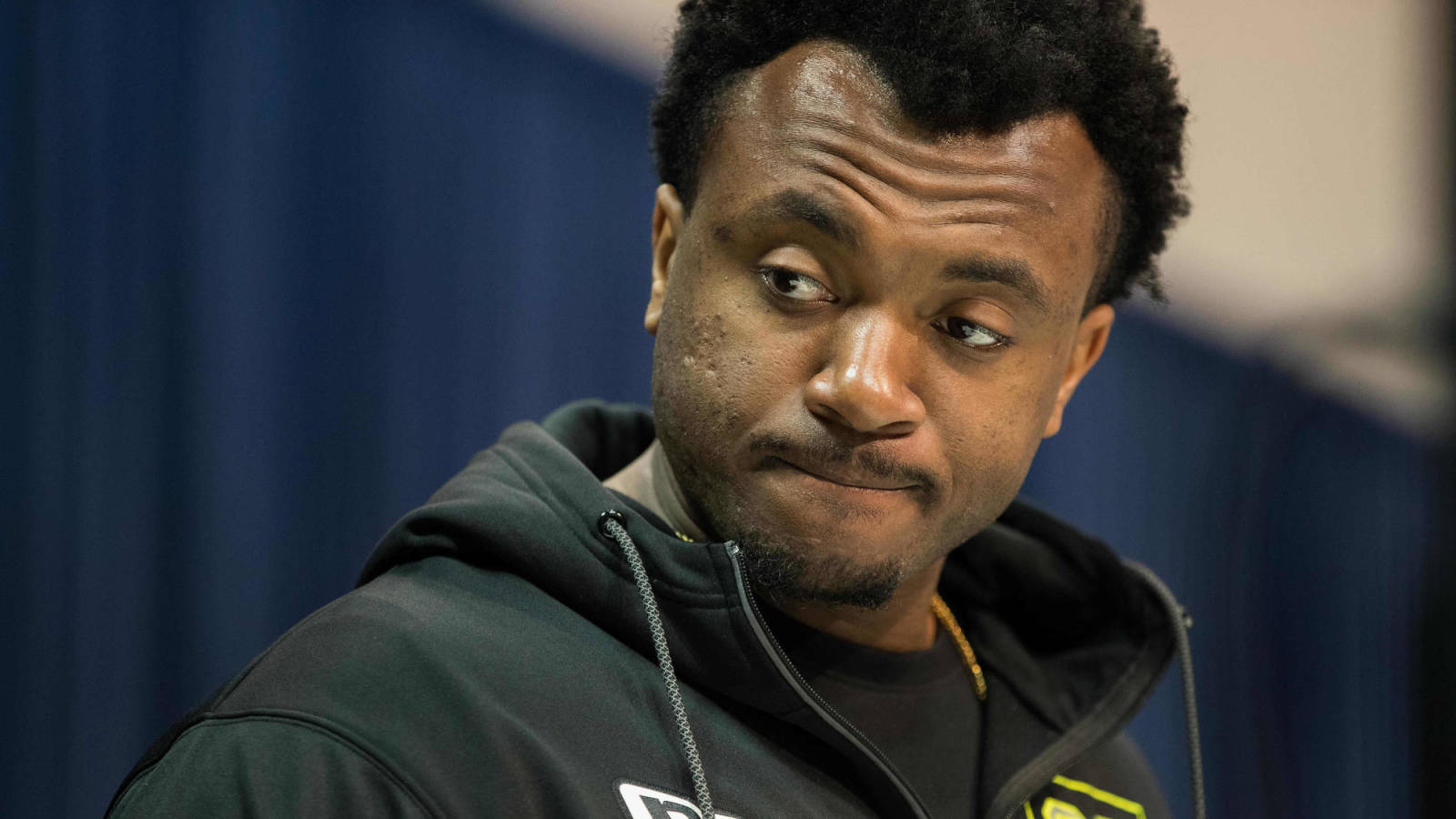
A Dolphins second-round offensive lineman may well have a better chance to start than the one Miami chose in Round 1. Louisiana tackle/guard Robert Hunt (No. 39 overall) is three years older than No. 18 overall pick Austin Jackson (USC). Hunt split time between left guard and right tackle during his career and managed to get noticed from a Sun Belt school. With Jackson, 20, profiling as a high-ceiling developmental project, the Dolphins could put Hunt’s positional versatility to work more quickly. Miami allowed a league-most 58 sacks last season and needs help at guard and right tackle.
Minnesota Vikings
The clock is ticking on Riley Reiff in Minnesota. The Vikings' three-year left tackle starter has graded as an above-average lineman, per PFF, over the past two seasons but saw Minnesota draft its hopeful left tackle of the future in Round 2 (Ezra Cleveland). It is notable that GM Rick Spielman indicated Cleveland – a tackle out of Boise State – could play guard, and Reiff saw some time at guard at Iowa (but never since). The Vikings cut Josh Kline and could have a guard opening, providing a way to get both Reiff and Cleveland in the lineup.
New England Patriots
Passing on mid-round quarterbacks Jacob Eason and Jake Fromm, the Patriots left the virtual draft with the same QB depth chart they had going into it: Jarrett Stidham and Brian Hoyer. Tom Brady threw only three passes as a rookie in 2000, and while Stidham beat that with four passes last season, the Pats going with a fourth-round pick who never threw 20 TD passes in a college season would be bold even for them. Cam Newton and Jameis Winston remain free agents post-draft, and Andy Dalton is still eating up $17.5 million of Bengals cap space. Will the Pats bite on one of the available veterans?
New Orleans Saints
The Saints value interior offensive linemen more than most teams, and their first-round selection of Michigan center Cesar Ruiz gives them a surplus of starting-caliber O-linemen. New Orleans re-signed guard Andrus Peat to a lucrative deal and has right guard Larry Warford back for what would be a fourth season in the Crescent City. The Saints also received a strong return on their 2019 second-round investment in center Erik McCoy and have ex-Vikings interior starter Nick Easton as an overqualified backup. It would seem the Saints have at least one trade chip in this mix.
New York Giants
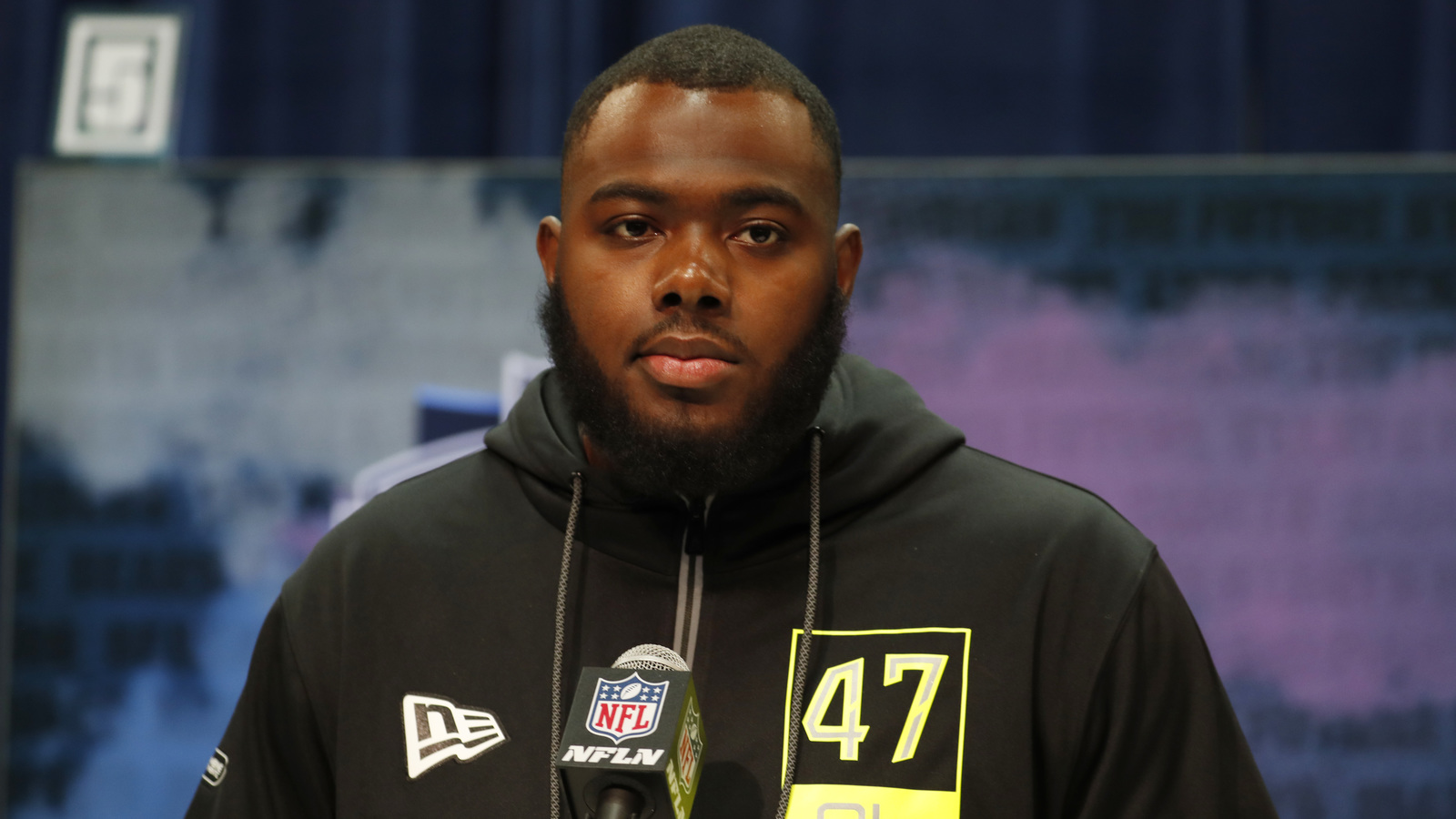
This draft appears to form a hopeful blueprint for the Giants’ future on their offensive line. No. 4 overall pick Andrew Thomas figures to have a great shot at becoming New York’s starting right tackle as a rookie before moving to the left side after Nate Solder’s likely 2021 departure. But the Giants drafted UConn tackle Andrew Peart in Round 3. They signed veteran swing tackle Cameron Fleming to a one-year deal in March, putting him in position to be the top backup this year, but it is not hard to see Big Blue’s plans including a Thomas-Peart tackle duo starting next season.
New York Jets
Baylor wide receivers have largely underwhelmed as pros, most notably with first-rounders Kendall Wright (2012) and Corey Coleman (2016) not justifying their draft slots. The Jets, who let Robby Anderson walk in free agency and tabbed Breshad Perriman as a poor man’s replacement, need Baylor-developed second-round wideout Denzel Mims to prove an exception. A height-weight-speed freak, Mims will have an easy path to snaps. That also says a lot about the Jets’ thin depth chart, which does not have much in the way of proven targets for the still-developing Sam Darnold.
Philadelphia Eagles
Teams do not make a habit of drafting second-round quarterbacks without the goal of them becoming their long-term starter. The last time this happened was probably 2008, when the Packers took Brian Brohm at No. 56 overall. If all goes well, Jalen Hurts will not disrupt Carson Wentz’s ascent. Doug Pederson was on Andy Reid’s Eagles staff when Michael Vick made the 2010 Pro Bowl, pointing to an interesting plan being in place for the dual threat Oklahoma QB. But with Wentz’s contract containing no outs until 2024, this is an incredibly unusual move by the Eagles.
Pittsburgh Steelers
Having traded their first- and third-round picks, the Steelers used their only selection in the first three rounds on one of their strongest positions. But taking Notre Dame wide receiver Chase Claypool in the second round is on-brand for the NFL’s premier wideout-developing franchise. But the Steelers already have JuJu Smith-Schuster -- who is entering a contract year -- along with 2018 second-round pick James Washington and 2019 third-rounder Diontae Johnson. It will be interesting to see how Pittsburgh integrates Claypool, a historically large wideout at 6-foot-4, 238 pounds.
San Francisco 49ers
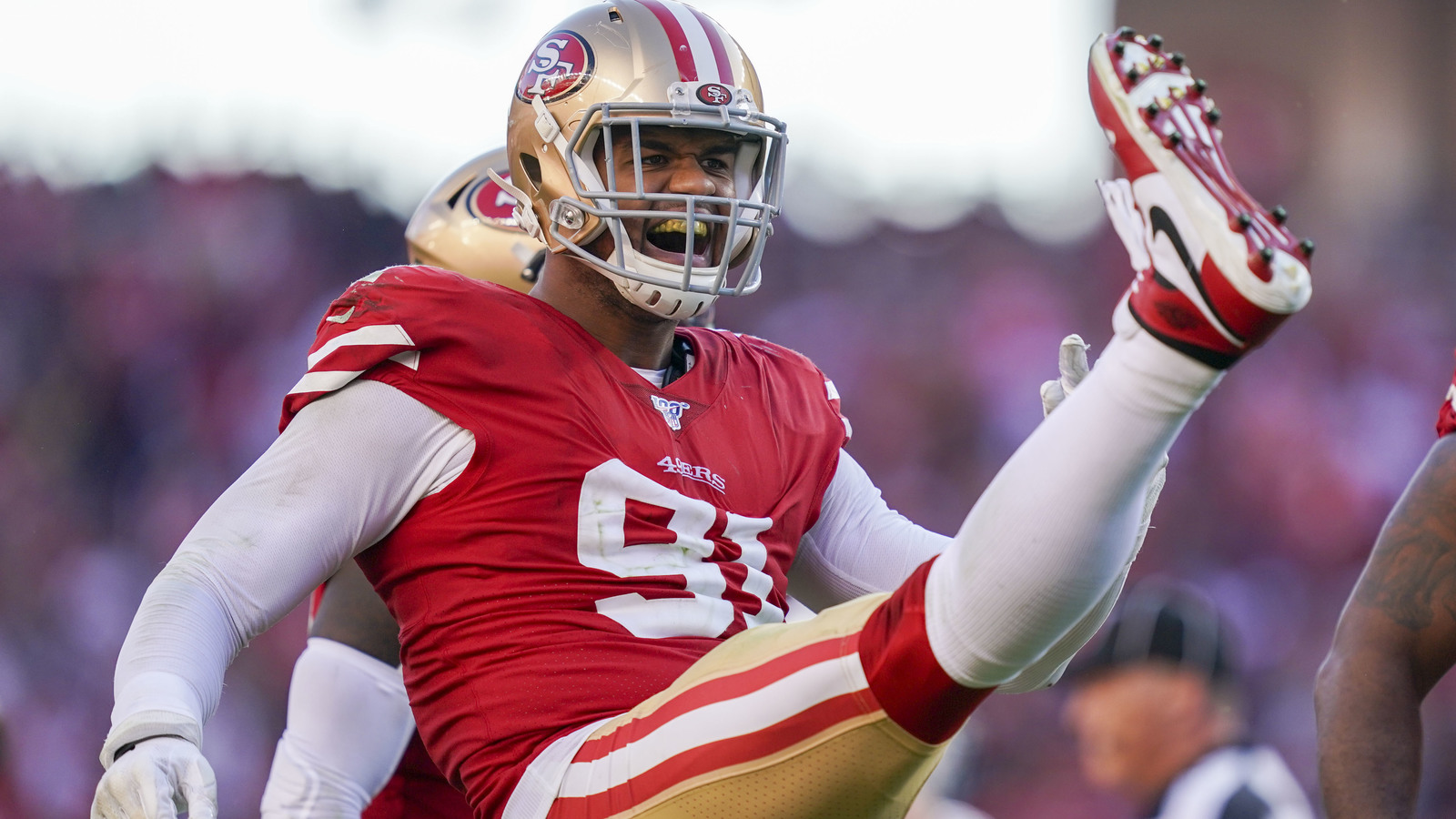
The 49ers made a simple decision to draft South Carolina defensive tackle Javon Kinlaw to replace the since-traded DeForest Buckner. While Kinlaw will face long odds to turn into the kind of player the 49ers’ 2016 first-round pick has become, Kinlaw’s rookie contract allows San Francisco to retain now-expensive defensive lineman Arik Armstead and attempt to match the depth and production the 2019 49ers had on their defensive line. This is all contingent on Kinlaw being in Buckner’s league, but not having an abundance of needs allowed the 49ers to try to keep their D-line elite.
Seattle Seahawks
Aside from quarterback, linebacker profiles as the Seahawks’ strongest position. Yet Seattle surprised most by drafting Texas Tech linebacker Jordyn Brooks, a player Scouts Inc. ranked outside the top 90 prospects this year. With future Hall of Famer Bobby Wagner signed to the NFL’s top off-ball linebacker contract, Brooks looks like the replacement for longtime Wagner wingman K.J. Wright. The latter’s third Seahawks contract expires after the 2020 season. With Wagner already in place, however, taking a linebacker this high represents another first-round "zag" by the Seahawks.
Tampa Bay Buccaneers
From Danny Woodhead to Shane Vereen to James White, the Patriots placed a high value on passing-down backs. The Bucs’ third-round pick, Vanderbilt’s Ke’Shawn Vaughn, becomes more important during Brady’s Tampa stay. It would seem Vaughn, whose eight 60-plus-yard rushing TDs from 2018-19 led Division I-FBS, would team with Ronald Jones. Neither of these backs has surpassed 35 catches in a college or pro season, however. With ex-UDFA Dare Ogunbowale leading Bucs backs with 35 grabs last year, Tampa Bay will feature an interesting competition for a suddenly critical role.
Tennessee Titans
The Titans needed a better Derrick Henry sidekick to help preserve the between-the-tackles mauler. Third-round pick Darrynton Evans is coming off a 1,480-yard, 18-touchdown season at Appalachian State and will be expected to do a better job supplementing Henry than Dion Lewis did. The Evans investment proves critical as well, because Tennessee – now with a franchise-quarterback contract and a running back franchise tag on its books – could not dole out another veteran pact at this position like it did with Lewis two years ago.
Washington Redskins
It is somewhat surprising Washington did not dive into this draft’s vast receiver reservoir earlier than Round 4. The team still intends to attempt to develop Dwayne Haskins, but last year’s Washington iteration had only one player – Terry McLaurin – surpass 400 receiving yards. Washington has 2019 sixth-round pick Kelvin Harmon and took small-school product Antonio Gandy-Golden on Saturday. But Haskins, who ranked last in 2019 QBR, probably needs more help than what he’s been given.
More must-reads:
- Top takeaways from Day 3 of the 2020 NFL Draft
- Winners and losers from Day 2 of the 2020 NFL Draft
- The '100 catches in an NFL season' quiz
Breaking News
Customize Your Newsletter
 +
+
Get the latest news and rumors, customized to your favorite sports and teams. Emailed daily. Always free!

